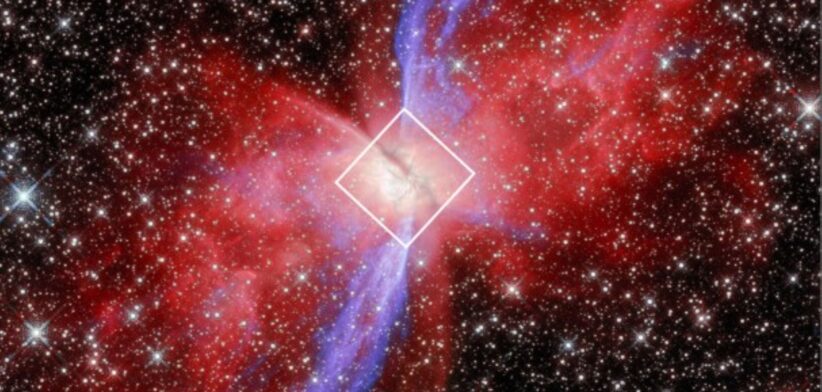The dying star of one of the Milky Way galaxy’s best studied planetary nebulae has been pinpointed through new images from the James Webb Space Telescope.
An international team combined images at different wavelengths with earth-based data to discover the Butterfly Nebula’s central star, one of the hottest ever found in the galaxy, with a surface temperature of around 220,000 degrees Celsius.
University of Manchester Professor Albert Zijlstra, a co-author of the paper said although this intense heat powered the nebula’s colourful glow, earlier telescopes lacked the sensitivity and resolution needed to see through the thick layer of dust, making the star impossible to detect at visible wavelengths.
“This is an extraordinary discovery. We’re looking at one of the hottest stars ever found – an object so elusive that even Hubble couldn’t detect it for decades,” Professor Zijlstra said.
Located around 3400 light-years away in the constellation Scorpius, he said the Butterfly Nebula was one of the best studied planetary nebulae, with its “wings” of glowing gas previously captured by the Hubble Space Telescope.
Professor Zijlstra said Webb’s new observations went even further, uncovering hidden structures and pinpointing the nebula’s elusive central star.
“Surrounding the star is a massive dark torus, the heaviest ever observed around such an object, containing more material than our own Sun,” he said.
“Even Webb can’t fully pierce through it. Inside, the environment is sheer chaos; powerful radiation and stellar winds tearing into the surrounding cloud. It’s unlike anything I’ve ever seen.
“Most planetary nebulae appear graceful and symmetric, but this one is still at the beginning of its transformation – it’s more like a butterfly struggling out of its cocoon than the elegant shapes we’re used to seeing.”
Read the full paper: The JWST/MIRI view of the planetary nebula NGC 6302 – I. A UV-irradiated torus and a hot bubble triggering PAH formation.









